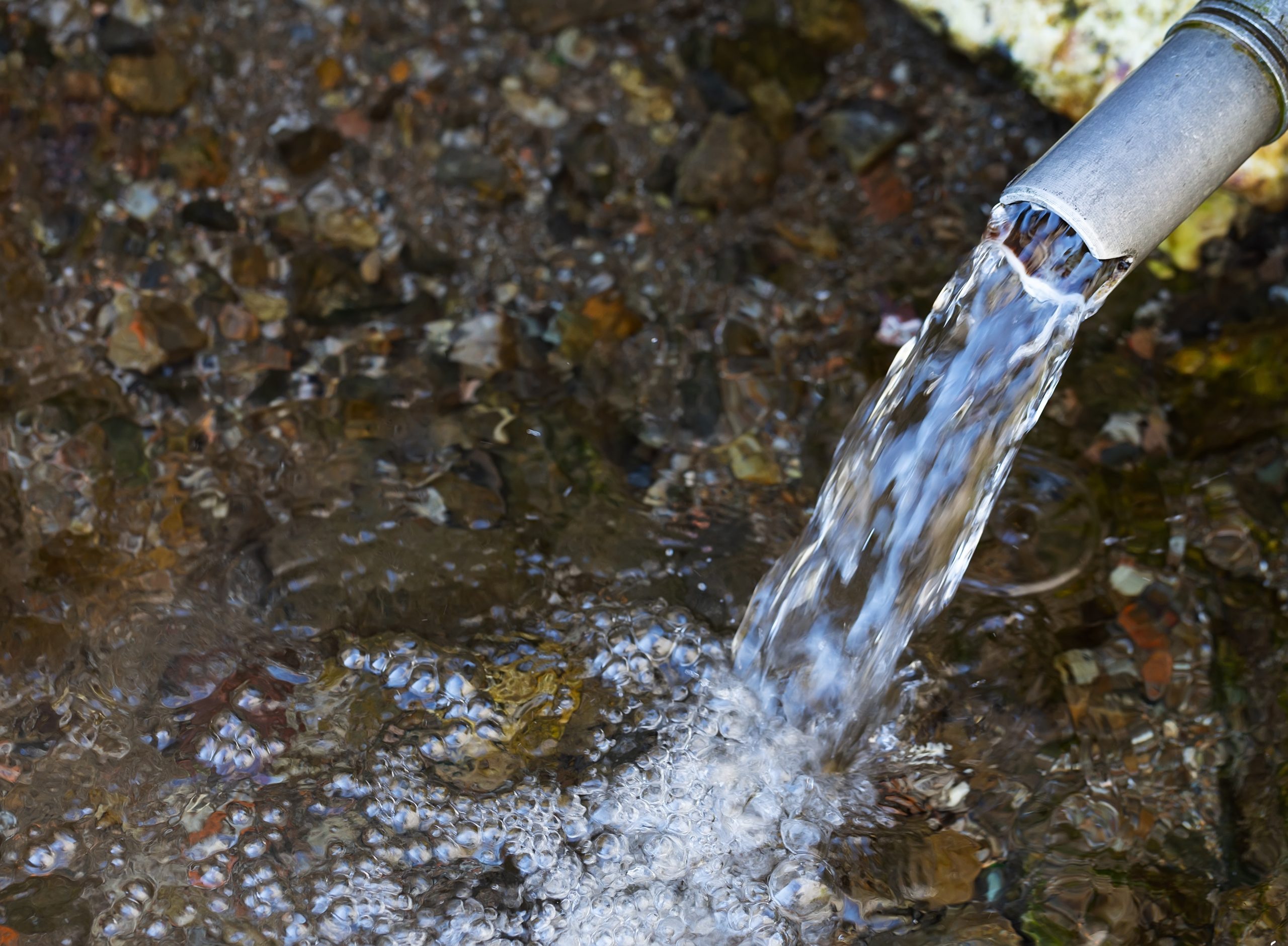Water scarcity is recognized as one of the main problems facing Greece this summer. The mild winter that preceded it brought little rain and even less snow, creating enormous difficulties, especially in island regions where options for pumping water are limited.
At the same time, demand has also spiked due to tourism, which increased by 15.5% year-on-year in the first half of 2024. Between January and June, Greece welcomed 11.6 million tourists from abroad, with 4.7 million people visiting Greece in June alone.
And this combination of a reduced supply and increased demand for water is likely to become the new norm. The climate crisis, which is inflicting ever more frequent extreme weather events on Greece, along with prolonged periods of drought and heat waves, is already showing its teeth. In June, rainfall was much lower than the averages for the last 15 years (2007-2023).
In fact, not a single drop of rain fell in Athens, while even in usually wet Ioannina, June’s precipitation did not exceed 34 mm, compared with an average of 65 mm for the month in 2007-2023. A little further south, in Arta, only 0.4 mm of rain fell in June 2024, while the average for the previous 15 years is estimated at 43 mm.
Water Reserves
This year’s poor volume of rainfall is reflected in the data on water reserves in the reservoirs of Mornos, Yliki, Marathon and Evinos. Specifically, the reservoirs of the Athens Water Supply and Sewerage Company (EYDAP) held about 705 million cubic meters (m3) of water on 20 August, which is the lowest level recorded on that date since 2008. The current period, before the first rains of autumn, is the driest of the year.
“The reserves in the Mornos reservoir reveal a significant reduction in volume, while the total reserves across all EYDAP reservoirs are about 30% lower this year compared to 2023,” notes Kostas Lagouvardos, Director of Research at the National Observatory of Athens (NOA). As he says, last year was also a bad year in terms of water collection. Note that the rainfall year runs from October to September.
“However, no major change in rainfall has been noted over the last 30 years, meaning there has been no systematic reduction in rainfall, which is positive,” he adds, citing 2019, when large amounts of water were collected. “Rainfall is highly variable. For example, we had consecutive bad years in the 1990s.”
What is a cause for concern, however, according to the NOA’s Research Director, is the decrease in snowfall in the country. “Snow is even more useful than rain in terms of water sufficiency, as it melts gradually, providing a continuous flow into the networks,” Kostas Lagouvardos explains.
Islands
The Greek islands are confronting the most serious problems in terms of poor rainfall. “In the Cyclades and Eastern Crete, we witnessed a 30-40% reduction in rainfall this year, with this figure reaching 50% in some areas. These latter areas have low levels of rainfall in any case; combined with the bad year, this has led to their facing serious water sufficiency issues,” Lagouvardos notes. “They get through the year with the rain that falls in the winter and autumn,” he adds.
At the same time, the extreme weather events which have become increasingly frequent in recent years are causing new problems, even if these might not always be obvious at first glance. For example, while large volumes of rainwater may have fallen during storms Daniel (2023) and Janus (2020), a significant amount of that water was not retained and ended up in the sea as runoff.
In addition, severe bad weather can destroy hydraulic works (e.g. dams), resulting in still greater damage to the water supply network. In fact, when such events occur after a long period of drought, the soil is unable to absorb the water, meaning there is no reduction in the crops’ irrigation needs. Moreover, when crops are ruined or swept away, the new to re-sow also increases the demand for water.
As Nikitas Mylopoulos, a professor in the Department of Civil Engineering at the University of Thessaly and director of the Laboratory of Hydrology and Aquatic Systems, points out to TA NEA, 86% of all water consumed is used for crop irrigation, with only 10% going to supply households and businesses, and the remaining 4% to industry.
He stresses that water scarcity is a political concept. “Drought is one thing, the prolonged absence of rainfall another, and water scarcity a third. While the first two are natural phenomena that largely arise from the climate crisis, water scarcity relates to human water management and results from an overconsumption of water,” Professor Mylopoulos stresses, adding: “The response therefore depends on our development model: what crops we grow, how we manage tourism, how we supply our cities with water.”
From bricks in the cistern to balancing the water budget
This isn’t the first time Greece has confronted water scarcity. In fact, Athens found itself in a very difficult position in the past. In the seven years from 1989 to 1995, the reserves in EYDAP reservoirs were at historically low levels.
More recently, too, the country has experienced periods of low rainfall that resulted in a sharp decline in the reserves held by Greece’s water companies. In 2001 and 2002, EYDAP reserves fell to a very low 349 million cubic meters. More recently, in 2008, reserves fell to just 426 million cubic meters.
Although the current 705 million cubic meters may seem positively Amazonian compared with these figures, it remains to be seen how long the downward trend in rainfall noted over the last two years will last: we may be just at the start of it, or it may be about to end.
In the summer of 1993, Greece’s total water reserves amounted to only 112 million cubic meters, which is six times lower than current levels. At that time, the EYDAP kept the public up-to-date with the current level of the reserves and ran public information and awareness-raising campaigns aimed at reducing household water consumption.
Going back in time, we read in the TA NEA of Thursday 14 June 1990: “EYDAP: now with bags to stop water going to waste”. The article explains: “EYDAP announced yesterday that […] free plastic bags are being distributed for water consumers to fill with water and place in their toilets’ flushing mechanisms so that less water is consumed every time we flush.”
“There is other cheap way to reduce the tank’s capacity […] by placing a brick or something similar inside. Don’t laugh. They do it in other places, too, including the US and the UK” an article entitled “Economizing drop by drop” explains in the 11 May 1992 edition of TA NEA.
And the increases in the price of water at that time had indeed left some people at their wits’ end: “My children and I are economizing. The brick we put in the flush last year has nearly worn away. And instead of washing the flowers once every five days, we now wash them every ten. I don’t leave the water running when I shave, either. But what else can we do? Wash in whiskey? Because right now, water is well on the way to becoming more expensive than liquor”, the famous actor Kostas Voutsas told TA NEA on 2 July that same year.
But apart from these Nineties household hacks, there were other methods for dealing with water scarcity. “In the past, many houses had cisterns to collect water in,” says Kostas Lagouvardos, in reference specifically to the issue of water scarcity in the Cyclades. “People could collect the water on their flat roofs today, too, then pipe it down to underground tanks—and many still do so.”
Still, the idea of a drought like that experienced in the 1990s hitting Greece today is nothing short of nightmarish. “How would the islands have survived back then, if they’d had the levels of tourism they have today?” the NOA Director of Research asks.
Desalination, network replacement and tank installation
Serifos is one of the arid Cycladic isles that experience a “death by a thousand drops” every summer. The island’s mayor, Konstantinos Revinthis, had this to say to TA NEA: “It’s a big problem and it’s getting bigger all the time. We haven’t had satisfactory levels of rainfall in five years, and this year is the worst yet. If we don’t get some rain next winter, we’re going to be left confronting a huge problem.”
As he points out, the ways things are going, the water reserves in the island’s dam and aquifer will soon be used up. But, despite the island’s water sufficiency issues, the municipality has to do doing everything in its power to avoid interruptions in the supply of water. This is because the pressure fluctuations an interruption in supply would cause within the water pipes would most likely leave the already overburdened and worn-out network seriously damaged and leaking badly.
In order to eliminate water wastage, the Municipality of Serifos has installed a rapid water refinery to filter what little water remains in the dam and feeds it clean into the network. Serifos has also sought recourse to the island’s desalination plant, which can provide up to 600 cubic meters of drinking water per day. “It is very costly and energy-intensive, but it’s the only solution at this stage,” Mayor Revinthis explains.
The great challenge for the Municipality of Serifos lies in replacing the current water supply network with an autonomous modern network, combined with the installation of cisterns in the mountainous parts of the island to supply water to the upland villages. The municipality also wants to add the construction of a large desalination plant to these infrastructure projects—one capable of supplying the network with up to 2,000 cubic meters of drinking water per day. “If the project goes ahead, we’ll have water every year, regardless of the rain”, the island’s mayor tells TA NEA.
Water scarcity may be a problem which affects the islands of the Cyclades directly, but the data for the country as a whole is anything but encouraging. “If we are to find a solution, we need to carry out a holistic watershed-level study for every river in Greece with a view to balancing the water budget—meaning the amount of water entering the catchment should be equal to the amount of water leaving it”, Nikitas Mylopoulos explains. “Today we have a negative balance in every watershed, resulting in the depletion of reserves and water scarcity. We need to be proactive and act immediately to solve the problem,” Professor Mylopoulos concludes.



